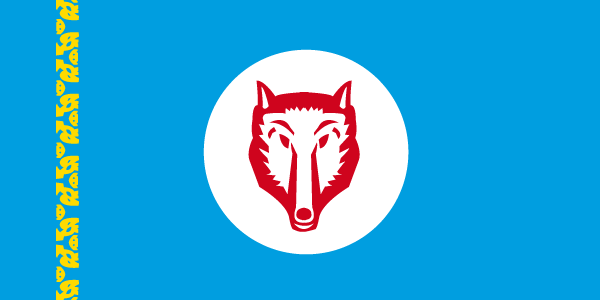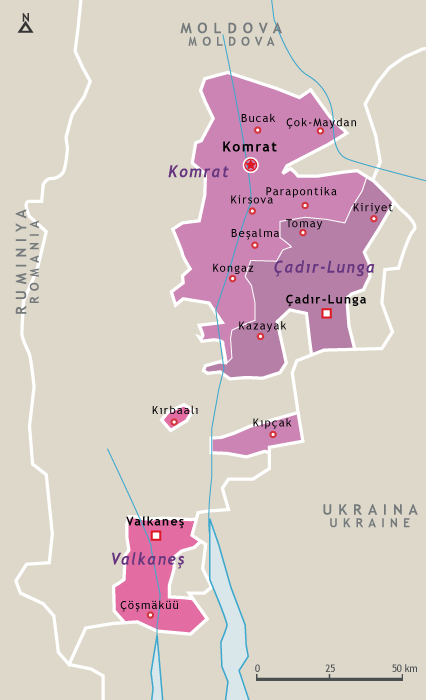Gagauzia, the Christian Turks of Europe

Gagauzia is a Turkish region of Moldova and the Ukraine. It proclaimed itself the Republic of Gagauzia in 1991, following which the Gagauzians quickly obtained the rights to be a part of Moldova, allowing them to use their language in an autonomous region.

A Turkish people of the Oghuz tribes, they distinguish themselves from Turks through their religion. Indeed, Christianised during their settling in Bessarabia during the 19th century, the Gagauzians are Orthodox Christians and speak an Altaic language that is quite different from Turkish. The Gagauz are little publicised. Alternatively under Moldovan and Russian administration, they revolted when the Soviet Empire collapsed in the 1990s. In 1991, an independent leader, Stepan Topal, was elected president of the “Gagauz Republic”. After proclaiming its independence, at the same time as the Russians of Transnistria, Moldova was obliged to find a compromise with the Gagauz to retain its sovereignty, while granting a statute of autonomy to the region and making the Gagauz language official. At the time the republic was created, all the towns which were populated with more than 50% of Gagauz were included in the territory. Referenda were held in areas that were more disparately populated.
Today, relations with the central authorities remain very tense. The results of elections are the subject of open conflicts between Moldovans and the Gagauz. Dumitru Croitor, governor from 1999 to 2002, resigned, having been subject to much pressure. Despite their relative distance from Turkey, the Gagauz maintain links with their cousins of Asia Minor. The Turkish government created a Turkish cultural centre and a library in Gagauzia.

Identity card

| Name | Gagauz-Yeri | Gagauz Găgăuzia | Romanian/Moldovan Гагаузия/Gagauziya | Russian (Gagauzia) |
| Population | 134,535 inhab. (2014) |
| Area | 1,832 km² |
| Languages | Gagauz | Gagauz Română | Romanian/Moldovan Русский/Russkiy | Russian (official) |
| Number of native speakers | 140,000 | Gagauz (2009) |
| State of guardianship | Moldova |
| Official status | Autonomous region of Moldova |
| Capital | Komrat | Gagauz Comrat | Romanian/Moldovan Комрат/Komrat | Russian (Comrat) |
| Historic religion | Russian Orthodox Christian |
| Flag | Kökbayrak | Gagauz (Blue Flag) |
| Anthem | Gagauziya Milli Marşı | Gagauz (Gagauzian National Anthem) |
| Motto | None |

Timeline

- 11th century • Migration of Oghuz people towards the Black Sea.
- 19th century • Arrival of Gaguazians in Bessarabia.
- 1856 • Moldovan administration, then Russian.
- 1906 • Proclamation of the Republic of Comrat, which only lasts 15 days.
- 1917 • The Gagauz deputies vote for Moldovan independence and their incorporation into Romania.
- 1940 • Annexation of Moldova by the USSR. The Gagauz are under Soviet administration.
- 1980 • Gagauz nationalist claims.
- 1991 • Proclamation of independence of the Republic of Gagauzia.
- 1994 • Creation of the autonomous region of Gagauzia and officialisation of the Gagauz language.

Brief history

Even if the history of the Gagauz is rich, especially in regards to their migration until their settling at the start of the 19th century on the banks of the Black Sea, the most prominent event was the proclamation of independence in 1991. Inspired by their neighbours of Transnistria, the Gagauz proclaimed the Socialist Republic of Gagauzia, essentially to fight a policy of Romanisation forced by the Moldovan authorities. Appointed executive president of the Supreme Soviet, the Gagauz Stepan Topal, became prime minister of the new republic in 1991 for three years. A conflict with the Moldovan authorities ensued who approved the peaceful aspirations of the Gagauz Territorial Autonomy in 1994, recognising the territorial unity of this people. The Gagauz now run their own education system and language policy.

Geography

With an area of 1,832 km², Gagauzia is situated to the south of Moldova and the south-west of the Ukraine. Comrat, the capital, is situated to the north, while the two enclaves of Copceac and Carbolia, more to the south, are separated by the Gagauz territory. The country is made up of three regions administered by the towns of Comrat, Ciadîr Lunga and Vulcăneşti as well as 29 villages. Estimated at 156,000 inhabitants, the population of Gagauzia is essentially rural. Only 40% of them live in the town. The Gagauz society is multicultural. 82.5% of the population is Gagauz, 5.2% Bulgarian, 4.6% Russian, 4.4% Moldovan, 3.3% Ukranian. These are the political consequences for the Slavic people of the former Soviet Republics.



